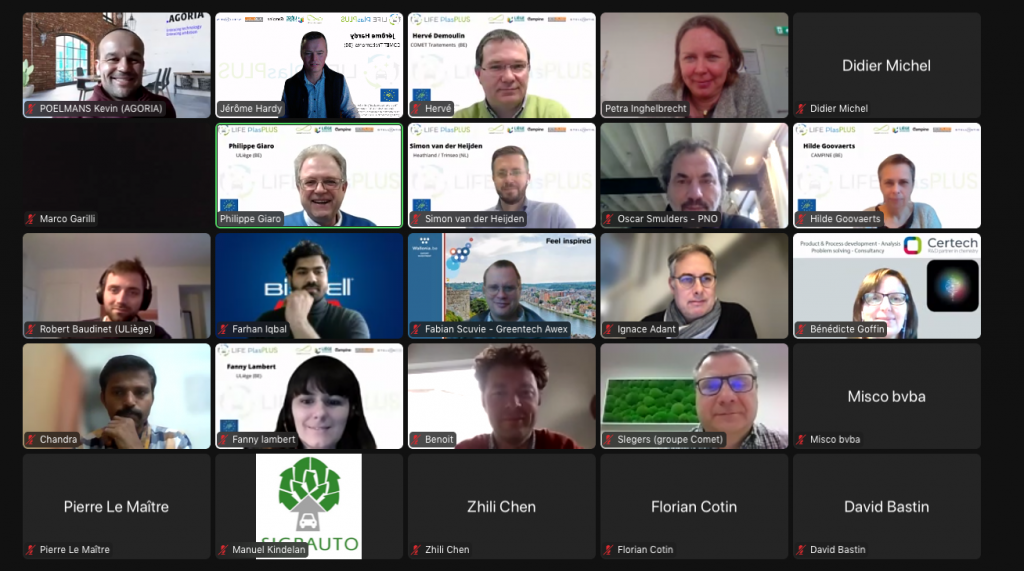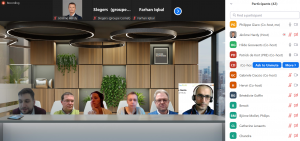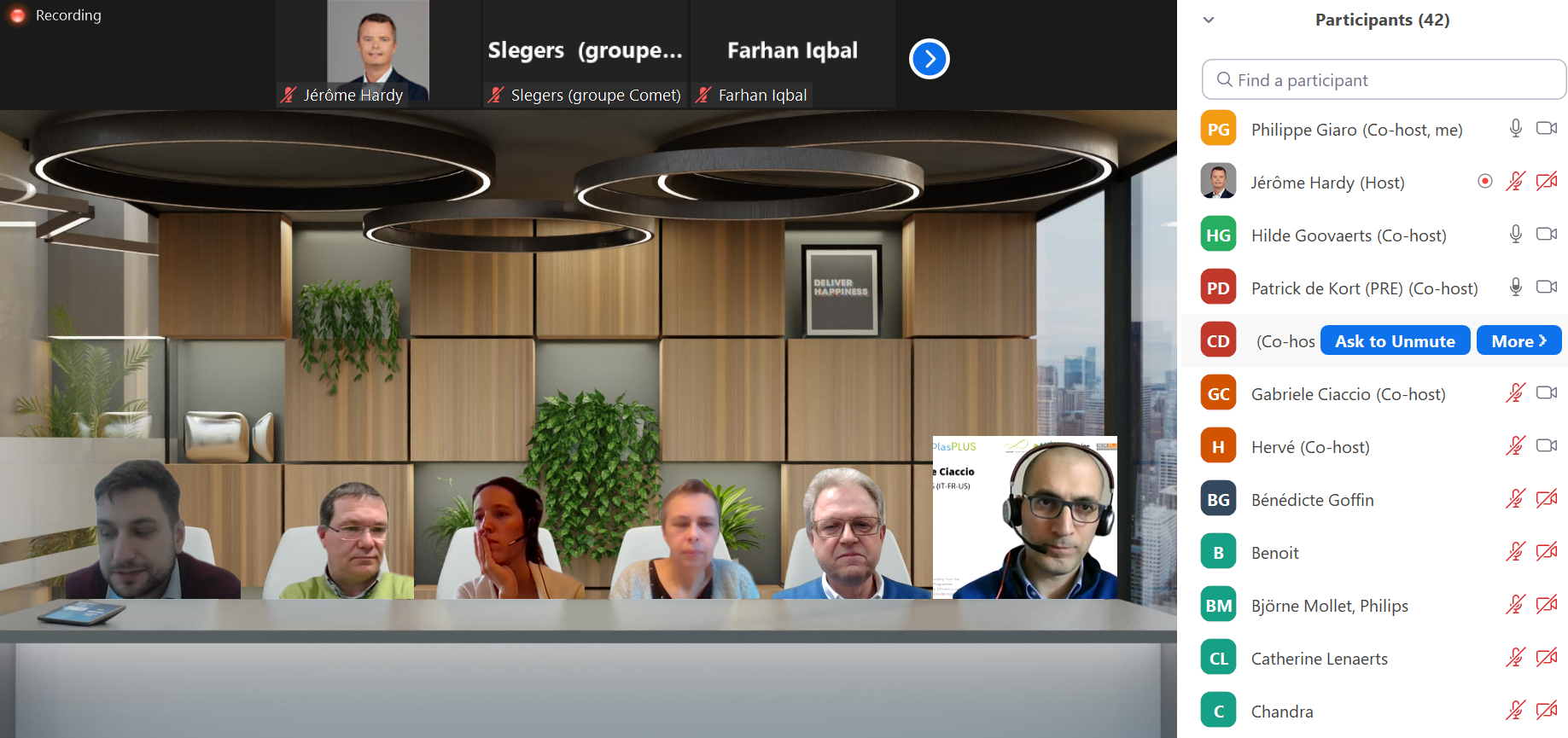08/02/2022
Success story: LIFE PlasPLUS shared research insights in its first event
On February 1st, 2022, the LIFE PlasPLUS consortium organized its first dedicated dissemination event to present the project, its current results and knowledge generated since the commencement of the research initiative. The project coordinator Comet Traitements hosted the event online due to the ongoing COVID-19 measures across Europe. More than 50 key stakeholders and public citizens attended the event.
The LIFE PlasPLUS partners Comet Traitements, Stellantis-CRF, University of Liege, Seri Plast and Campine have brought together key stakeholders from the plastic, recycling and automotive industry for their first dedicated dissemination event that took place on 1st February 2022. The key objective of the event was to present the LIFE PlasPLUS project and its current achievements. Above all, the topic discussion was aimed at presenting novel technologies for recycling of secondary thermoplastics and critical raw materials coming from mixed waste electrical and electronic equipment (WEEE) and end-of-life vehicles (ELV).
The project coordinator, Comet Traitements, officially launched the event with a welcome address, followed by a general LIFE PlasPLUS presentation. Leading organizations from the plastic sector presented the landscape of the European ecosystem by sharing their latest market analysis. The discussion was then followed with presentations by the core industrial LIFE PlasPLUS partners and their role in the thermoplastic value chain.
During the second panel that took place in the afternoon, three complementary on-going European projects presented their research activities. The projects PLAST2bCLEANED, ABSolutely Circular and MMAtwo are mainly focused on WEEE plastics, Acrylonitrile Butadiene Styrene (ABS) and PolyMethylMethAcrylate (PMMA). The dedicated dissemination event successfully ended with a specific session dedicated about the future outlook of the LIFE PlasPLUS technologies and a Q&A panel with all participants.
The event was initially planned to be held on site at project coordinator Comet Traitements’s Obourg industrial facilities. However, due to on-going travel restrictions imposed by the health crisis, the event was hosted online. As a surprise to the audience, the project coordinator had organized a digital tour of its facilities, presenting the novel technologies.

Figure 1. Kick off of the first LIFE PlasPLUS dissemination event
Agenda
1. PANEL: LIFE PlasPLUS and plastic ecosystem
Plastics Europe presented insights from their circular economy study about the plastic production, life cycle, post-consumer waste and recycling processes across Europe. In 2020, more than 29 million tons of post-consumer plastic waste was collected within the EU27+3. The LIFE PlasPLUS partners are actively working to increase the recycled percentage of that amount which currently accounts for 34.6%.
Plastics Recycler Europe focused on the technical plastics; notably the “shredder light fraction” (SLF) from WEEE and ELV treatment centres. This topic was of specific interest for the LIFE PlasPLUS project which targets the upcycling of recycled plastics, specifically by re-entering Acrylonitrile Butadiene Styrene (ABS), Polystyrene (PS) and Filled Polypropylene (FPP) in the recycled loop.
Stellantis-CRF highlighted that improvement uptake of recycled plastics is key for manufacturing new vehicles. As discussed, this is particularly important in the light of the current supply chain breakdown being experienced by automotive manufacturers worldwide. Particularly noteworthy is the fact that Stellantis created product specifications that are applicable to recycled material. Thereby, acknowledging the importance of recycled products and of bringing them back in the product value chain and overall economy.
Campine, the largest global actor in antimony outside China, plays a key role in the LIFE PlasPLUS project activities. Campine aims at producing high purity recycled antimony compounds. Antimony, which continues to occupy a very high position on EU’s fourth version of the Critical Raw Materials list, is finding new applications in products such as liquid metal batteries for long term storage while the role of synergists in flame retardants products remains antimony’s main application.
2. PLASTIC ecosystem stakeholders
PLAST2bCLEANED (https://plast2bcleaned.eu/) presented its strategy to develop a human and environmentally safe recycling process for WEEE plastics in a technically feasible and economically viable manner. Through dissolution of WEEE plastics in heated solvent, the project aims to close three specific material loops : polymers, bromine and antimony.
ABSolutely Circular (https://absolutely-circular.com/) aims at demonstrating the environmental and economic benefits of using advanced recycling technologies to close the loop of plastic recycling. An initial key objective of the project is to demonstrate for the first time the production of ABS based on recycled feedstock taking advantage of advanced recycling technologies. The project is also planned to demonstrate scaling of the solution from lab scale to demo plant and ultimately to commercialisation.
MMAtwo (https://www.mmatwo.eu/) aims at constructing a novel and fast growing PolyMethylMethAcrylate (PMMA) recycling value chain based on the production of « Second Generation MethylMethAcrylate (MMA) » from post-consumer and post-industrial PMMA based products. MMAtwo’s innovative concept for PMMA waste recycling through depolymerization is focusing on handling both post-industrial and contaminated end-of-life PMMA waste, thereby converting difficult to recycle waste that would otherwise be landfilled or incinerated into high quality secondary raw material.
3. PANEL 3: LIFE PLasPLUS looking forward
Panel discussions covered the opportunity for mechanical plastic recyclers to work hand in hand with chemical plastic recyclers. LIFE PlasPLUS partners also defended the concept that a continuous improvement approach should be maintained to maximize the integration of recycled materials in brand new products by constantly upgrading the quality of the products manufactured by companies engaging in recycling activities. LIFE PlasPLUS partners also support the notion that new product specifications specifically designed to uptake recycled material are one of the keys to improve the use of recyclates in the product value chain.

Figure 2. An interesting discussion between the speakers and participants.
The full agenda of the event can be found here.
Speakers & Presentations
Hervé Demoulin, Comet Traitements
Charlotte Delvaux, Plastics Europe
Patrick de Kort, Plastics Recyclers Europe
Petra Ingelbrechtm, INEOS Styrolution
Simon van der Heijden, Heathland

